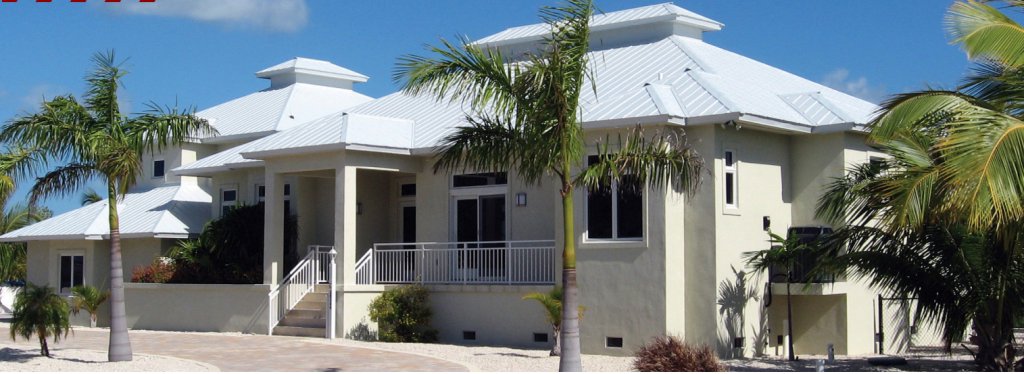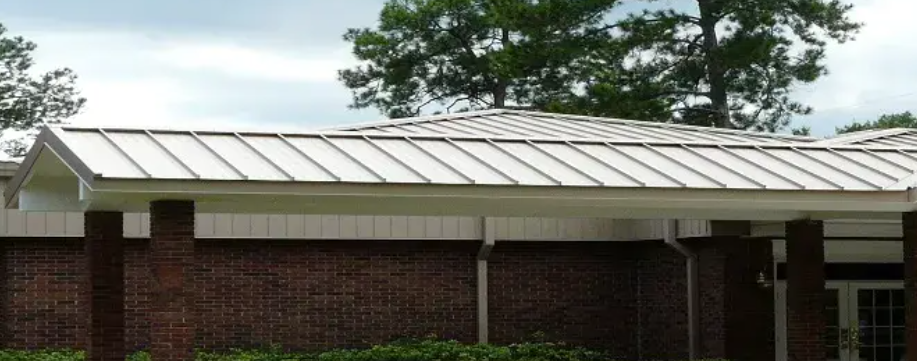When it comes to choosing a roofing material, there are many options available in the market. However, two of the most popular types are 5V roofing and standing seam roofing. In this guide, we will compare 5V roofing vs. standing seam roofing, so you can decide which one is right for your roofing project in Terrell, TX.
5V roofing vs. standing seam roofing appearance and style
5V roofing has a simplistic appearance with fewer customization options and limited color choices. It is suited for projects requiring a classic or traditional look. Standing seam roofing offers more customization options, such as the panels’ length, width, profile, shape, and thickness. Standing seam roofing is ideal for projects requiring a sleek, modern look and offers various colors and finishes.
5V roofing vs. standing seam roofing durability and lifespan
Both durable and long-lasting, they come with warranties ranging from 40 to 50 years, a testament to their durability. Standing seam roofing offers better protection against leaks and rust due to its concealed fasteners. The concealed fasteners protect the panels from weather damage and prevent moisture from seeping into the roof structure. The seams on 5V roofing panels are exposed, which can lead to rust and leaks over time.
5V roofing vs. standing seam roofing weather resistance and maintenance
They are both weather-resistant and require low maintenance, and they can also withstand harsh weather conditions such as heavy rain, wind, and snow. However, standing seam roofing is more energy-efficient and better insulated than 5V roofing.
The standing seam roofing panels lock into place with clips that allow for thermal expansion and contraction, preventing energy loss and lowering heating and cooling costs. This makes standing seam roofing a better choice for energy-efficient buildings.
5V roofing vs. standing seam roofing cost comparison and value for money
When comparing 5V roofing vs. standing seam roofing, 5V roofing has exposed fasteners, and the panels adhere through the roof panel into your purlins and sheathing, which makes installation less labor-intensive. However, standing seam roofing provides better long-term value due to its energy efficiency, insulation, and durability. While standing seam roofing may cost more upfront, it offers better energy efficiency and insulation, leading to lower energy costs in the long run.
Additionally, standing seam roofing’s concealed fasteners provide better protection against leaks and rust, which can extend the roof’s lifespan and require fewer repairs and maintenance over time.
Let’s explore 5V roofing vs. standing seam roofing systems in detail.
What is 5V roofing?

5V roofing is a metal roofing with a crimped surface with five V-shaped creases, two along each edge and one in the middle. This roofing material is typically 24 inches wide and has exposed fasteners that adhere through the roof panel into your purlins and sheathing. It is commonly used for agricultural roofing applications, but its simplistic beauty and durable design allow it to be applied to various residential and commercial projects.
Pros of 5V roofing
- More economical at installation than standing seam roofs
- Sturdy and dependable roofing material
- It is ideally suited for coastal exposures, withstanding high winds, hard, pelting rains, and sudden changes in wind direction.
- It comes with a typical warranty of 40 years against paint failure or corrosion.
Cons of 5V roofing
- Exposed fasteners may be unsightly and prone to rust
- Limited color options and less customization compared to standing seam roofing
- Not as energy-efficient or insulated as standing seam roofing
What is standing seam roofing?

Standing seam roofing is a type of metal roofing that features raised seams or vertical legs that rise above the panel’s flat area. The fasteners are concealed, making for a more seamless appearance. Standing seam roofs lock into place with clips that allow for thermal expansion and contraction, making them more energy-efficient and better insulated than 5V roofing.
Pros of standing seam roofing
- More visually appealing and customizable than 5V roofing
- More energy-efficient and insulated than 5V roofing
- Durable and long-lasting, with warranties for both material and finish that can be up to 50 years
- Concealed fasteners offer better protection against leaks and rust
Cons of standing seam roofing
- More expensive at installation than 5V roofing
- Requires more labor for installation
- Not as ideally suited for coastal exposures as 5V roofing
Below are some frequently asked questions about 5V roofing vs. standing seam roofing.
FAQs
Can 5V roofing be used for curved or rounded roofs?
Yes, 5V roofing can be curved to fit rounded or curved roofs, but it requires special equipment and techniques.
Can standing seam roofing be installed on low-slope roofs?
Standing seam roofing can be installed on low-slope roofs but requires sealant to prevent leaks.
Can 5V roofing or standing seam roofing be installed over an existing roof?
Yes, both 5V roofing and standing seam roofing can be installed over an existing roof as long as the existing roof is in good condition and the new roofing material does not exceed the weight limits of the existing roof.
Are there any fire-resistant options for 5V roofing vs. standing seam roofing?
They can both be coated with fire-resistant coatings for better fire resistance. It is essential to consult with a contractor or architect to determine the best fire-resistant options for your specific project.
Can 5V roofing or standing seam roofing be painted or coated with a different color after installation?
They can be painted or coated differently after roof installation or replacement. Whether choosing to paint or coat 5V roofing or standing seam roofing, consult a professional to ensure the proper preparation and application of the new coating or paint.
Final verdict
As with any decision, choosing 5V roofing vs. standing seam roofing ultimately depends on your specific needs and preferences.
If you want a more economical option with a classic appearance and simple design, 5V roofing may be your better choice. However, remember that 5V roofing has exposed fasteners, limited color options, and may not be as energy-efficient or well-insulated as standing seam roofing.
On the other hand, if you are looking for a roofing material with a sleek, modern look and better protection against leaks and rust, standing seam roofing may be the better choice for you. While installation may be more expensive, standing seam roofing provides better long-term value due to its energy efficiency, insulation, and durability.
Ultimately, choosing 5V roofing vs. standing seam roofing comes down to the build and personal preferences of the owner.






